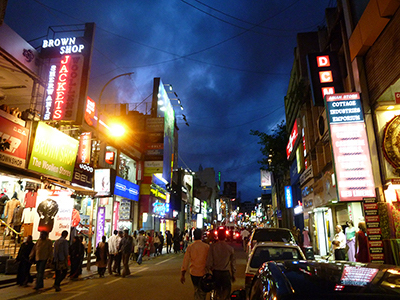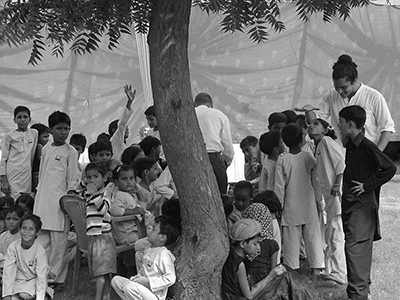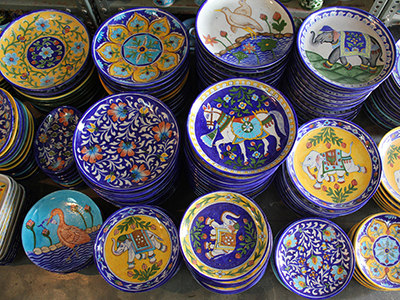

NARRATIVES
THE CREATOR OF AROMA
North India
“The first condition of understanding a foreign country is to smell it.”
- Rudyard Kipling
The warm fragrance wanders into the softly-lit morning street. It wafts from the kitchen, through the open door and the windows of a concrete indigo house, waking a stray dog as it goes past, leading the poor animal to bark suddenly at the sun, hungry for a taste of the delicious-but-forbidden smell.
A teenage girl on the front steps of her home washes a stack of wet clothes. Her younger sisters have slipped into their school uniforms and now sit next to her, braiding each other’s hair.
Their mother’s familiar call puts an end to their early morning activities as they rush back inside to the pleasurable heat of a wood fire. They surround their mother, sitting cross-legged on the mud ground. The breakfast paranthas have been pan-fried on the heavy, cast-iron tava and the family can now enjoy the hot unleavened oily bread with plain curd, the tasteful Indian yoghurt. Two cups of whole-wheat flour for one cup of water, flavoured with a pinch of salt, miraculously gives flavour to the soft dough of the chapatis that the woman has prepared for her children to take to school. The first one she gives to the holy cow that provides the family with nourishing milk every day. She then fills the little silver lunch boxes that her girls carry to the government school. Her last mission is to add some ghee to the chapati dough, rolled out and folded twice, then cooked on the hot tava with more ghee, to create a breakfast favourite, the source of the bewitching fragrance that gains over the neighbourhood streets: the golden brown parantha. Hers are plain, but some prefer them with more filling, stuffed with potatoes - aloo ka parantha in Hindi.
But Ishwar, the old father-in-law, sitting in the white plastic chair at the centre of the courtyard, swears by the simplicity of the family recipe. After eating their breakfast, the younger girls vanish away to the world of learning, leaving the elder to more mundane tasks. Shelling green beans, the attentive nurturing mother keeps food in mind, already focused on the next meal.
A divine power comes over her: she is the creator of aroma.

Urban Streets of Bangalore
To feel the temperature of a city, I walk around aimlessly at first, just to let the sights, the scents, and the sounds of the place sink in...
Narrative • South India

Among the Rajputs
The scene is set in Shekhawati, towards the end of the month of July. On the occasion of an excursion...
Narrative • North India

A Life Closer to Nature
With Another Escape, we travelled to the geographically rich region of Ladakh, and discovered a community living in harmony at 3000m...
Behind-The-Scenes • North India

Where Art is Made
This journey explores the many handicraft traditions ranging from pottery to textiles in the states of Rajasthan and Uttar Pradesh...
Bespoke Journey • North India

Ahilya Fort
A thing of the books, the Ahilya Fort is a boutique accommodation for the heart that like to delve in...
Hotel Guide • West India

Marble Steps in Sardargarh
The most unknown secret of the Lake Palace is a jewel named Sardargarh. Hiding behind gigantic battlements overhanging...

